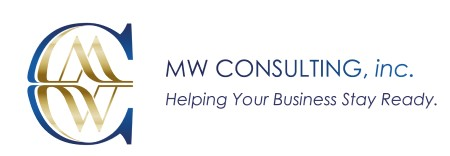
Is Your Business Ready?
Take the assessment and find out.

We Will Help You Succeed
No matter how complex your business issues are, MW Consulting, Inc. has the capabilities and experience to deliver the answers you need to succeed.
Innovation, transformation and leadership occur in many ways. At MWC, our ability to solve clients’ most complex issues is distinct. We deliver strategy and implementation, from a business and technology view, to help you lead in the markets where you compete.
Founder & Sr. Principal, Monika Wood, MBA, is currently completing a DBA (Doctor of Business Administration) at Temple University. Her 10+ years of comprehensive business achievements across multiple disciplines includes startups to Fortune 100 companies. She has consulted for Deloitte and Accenture.
Monika has 10+ years of Management Consulting, 50+ consulting projects, facilitates many business speaking/training engagements and has successfully helped hundreds of businesses streamline their processes to increase profitablity.
CORE COMPETENCIES
- Board Development
- Change Management
- Risk Management
- Scaling
- Strategic Management & Planning
- Systems Implementation & Training
Our Professional Solutions
What We Offer
If you are a key decision maker and your company is earning >$400k in annual revenue, then you are in the right place. When executives and owners come into our space, they grow their businesses from 50-200% in 12 months or less.
We have several business solutions available that will help you grow professionally and increase the bottom line.
YOU NEED US & WE SHOULD TALK IF…
- your annual revenue has been the same or declining in the last 3 years
- your business isn’t serving you
- you need help managing your growth curve
- your team isn’t hitting goals month over month
And, you should know that you must be willing to make an investment. What you invest will be far less expensive than continuing to do what you are doing currently in your business because it will only keep you stuck where you are. Gaining access to what you need with the help of a Management Consultant is what your bottom line needs.
Monika Wood, MBA (doctoral candidate)
Founder, Sr. Principal
Our Founder & Sr. Principal, Monika Wood, MBA is proud world traveler and expert Management, Strategic and Change Consultant. She has 10+ years of executive experience in a wide variety of verticals that has helped her develop a keen business sense that has made her an industry leader. Become a client and learn how to keep competing in this modern era of business.
How We Can Help You Stay Ready
We Will Help You Every Step Of The Way
Our goals is to help leaders in business achieve profit goals, increase productivity and ‘Stay Ready’.
01
Scale Your Business
Need help growing your business? We can help.
02
Enhance Your Skills
Want to take your strategy, core competency and leadership skills to the next level? We can help.
03
Increase Profit
Want to increase your bottom line? We can help with that too.
